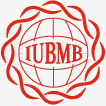|
BIOINFORMATICS...
a merger of computer technology, software algorithms, and software analysis of large biological databases.
The Human Genome Project, begun in 1990, announced in April of 2000 that a
complete (yet rough) draft of the human genome has been mapped.
The human genome, estimated to contain about 100,000 genes holds 3 Gigabytes of nucleotide sequence (A, T, G, & C's) data.
That's enough data to fill 2080 (1.44MB) floppies, 30 Zip disks, or 1 average size hard drive. At the
rate of 1 base nucleotide per second, how long would it take you to read the entire Human Genome ??????
|
Genomic Databases involves: |
Genomic databases contain: |
|
collecting & storing data |
3 GB of nucleotide sequence (ATGC) |
|
searching existing databases |
Single Nucleotide polymorphisms (SNP's)
single base differences indiv to indiv |
|
interpreting databases ???
finding drug target sequences
when genes are turned on
in which tissues |
Proteomics
shapes of proteins that genes code
how proteins interact |
|
|
comparisons of sequences sp to sp |
1st Bioinformatics database (1980's - initially DOE then NIH's NCBI)
was GENBANK. In the 1990's when the HGP began, it held the initial sequence data;
today, Genbank holds some 7 billion units of DNA sequences. The data is so vast and is coming at such a fast pace that supercomputers will be required to analyze the data.
Incyte Genomics, a St. Louis pharmaceutical company can sequence 20 million bp/day and Celera Genomics has at this time (Jul 2000) has 50 terabytes (5 x 10
13 bytes) of DNA sequence data.
The function of Bioinformatics often includes searching for similarities (Homologies)
between sequenced pieces. Software programs as:
BLAST (Basic Local Alignment Search Tool) and ENTREZ are meta search engines (ala Yahoo) that can analyze vast amounts of data
rapidly.
An example:
cathepsin-K. osteoclast cells (bone degrading cells for replenishment) are overactive
in patients with osteoporosis. HGS sequenced, homologized, and found unique nucleotide sequences that were over-expressed in osteoclasts. These sequences coded for the enzymes called
cathepsins. Smith-Kline-French is looking for a drug that will block cathepsin-K's binding sites.
For the Bio-Investor - 3 classes of bioinformatic companiesto invest in:
1. Big Pharma Super-pharmaceuticals using in-house BI
Bayer, Glaxo-Wellcome
2. strattler companies they sequence and data-mine
HGS, Celera, & Incyte
3. specialist companies they do unique data-mining & integration. |







